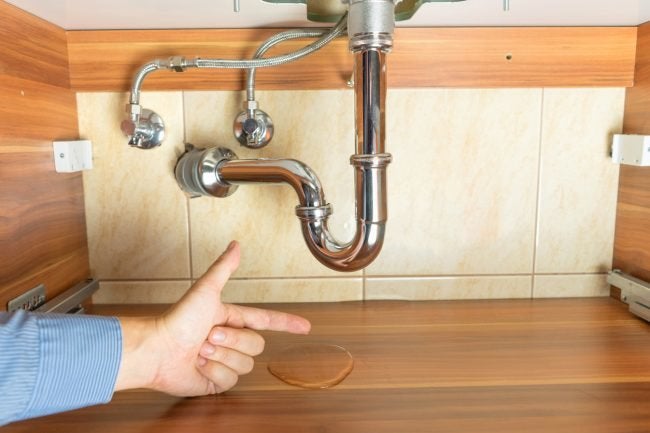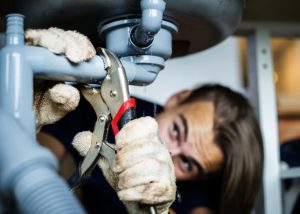Guide To Water Leakage Detection In The House
Guide To Water Leakage Detection In The House
Blog Article
What are your ideas on Locating water leaks?

Early detection of leaking water lines can alleviate a potential calamity. Some small water leaks may not be visible.
1. Take A Look At the Water Meter
Every residence has a water meter. Examining it is a proven way that aids you discover leaks. For starters, switch off all the water resources. Make certain no one will purge, utilize the faucet, shower, run the cleaning device or dishwasher. From there, most likely to the meter and also watch if it will alter. Because no one is using it, there must be no movements. If it relocates, that shows a fast-moving leakage. Furthermore, if you find no changes, wait an hour or more and also examine back once again. This means you might have a slow leak that could even be below ground.
2. Examine Water Intake
Evaluate your water bills and also track your water intake. As the one paying it, you ought to observe if there are any disparities. If you spot sudden changes, in spite of your intake being the same, it means that you have leakages in your plumbing system. Remember, your water costs ought to drop under the same array each month. An abrupt spike in your costs shows a fast-moving leak.
On the other hand, a steady increase each month, even with the very same habits, reveals you have a sluggish leakage that's also gradually intensifying. Call a plumber to completely check your home, especially if you really feel a warm location on your flooring with piping beneath.
3. Do a Food Coloring Test
When it comes to water consumption, 30% comes from commodes. If the color in some way infiltrates your bowl during that time without flushing, there's a leak in between the container as well as bowl.
4. Asses Outside Lines
Don't forget to check your exterior water lines too. Examination faucets by connecting a yard pipe. Ought to water seep out of the connection, you have a loosened rubber gasket. Replace this and make sure all links are tight. It will certainly help get it expertly took a look at and preserved yearly if you have actually got a lawn sprinkler system. One small leak can lose tons of water as well as surge your water costs.
5. Examine and Analyze the Situation
Property owners should make it a behavior to check under the sink counters and even inside cupboards for any bad odor or mold and mildew development. These 2 warnings suggest a leak so prompt attention is needed. Doing regular examinations, also bi-annually, can save you from a major issue.
Examine for discolorations and also deteriorating as the majority of appliances and pipes have a life expectancy. If you presume dripping water lines in your plumbing system, don't wait for it to escalate.
Early discovery of dripping water lines can alleviate a potential disaster. Some small water leakages may not be visible. Inspecting it is a proven method that helps you find leaks. One little leak can squander heaps of water as well as spike your water bill.
If you believe dripping water lines in your plumbing system, don't wait for it to rise.
How to Know If Your Home Has a Hidden Leak
Water Meter Reveals Inexplicable Water Usage
If you’d like to test whether or not there’s a leak somewhere in your home, you can do this using your water meter. Here is how to conduct the test:
Don’t use any water in your home for at least 30 minutes; this also means not turning on faucets or water-using appliances.
Go outside, and check your water meter for activity.
If your water meter shows that there was activity, even though no one was using any water, this proves that there is a leak in your home.Visible Mold or Mildew Growth
Leaks behind walls create moist, dark environments that allow mold and mildew to grow and thrive. Eventually, you might see mold growth forming on the wall closest to a hidden leak.
If mold is growing in an area that receives a high amount of moisture, such as a bathroom, it may simply be an indication that better ventilation is needed. However, if you see mold growth on a wall or the ceiling in an area where you would not expect, you probably have a hidden leak.
Musty, Mildew Odor
Sometimes you might not be able to see the mold or mildew that is growing as a result of a leak. However, the smell can give the problem away just as easily. If you catch a whiff of something musty, there’s a good chance that old water is collecting somewhere in your home that you can’t see.
Stained/Warped Walls, Ceilings, or Floors
When your home soaks up water, a variety of red flags can become visible, including ceiling stains, bubbling drywall, warped walls, and sagging floors. While these issues can be caused by excess humidity, they can also be signs that a pipe or plumbing connection has started leaking behind your walls.
Inexplicably High Water Bill
After a while, you get a general sense for what your water bill should be. If you own a pool or sprinkler system, your bill will tend to be higher during summer. However, if you receive a water bill that seems especially high, and you can’t figure out what caused it, then you may have a hidden leak somewhere that’s increasing your bill.
https://www.plumbingjoint.com/blog/2019/july/how-to-know-if-your-home-has-a-hidden-leak/

Hopefully you enjoyed reading our section on Detecting hidden plumbing leaks. Thanks a lot for taking time to browse our blog post. Enjoyed reading our article? Please share it. Let other people check it out. I value reading our article about Locating water leaks.
Report this page